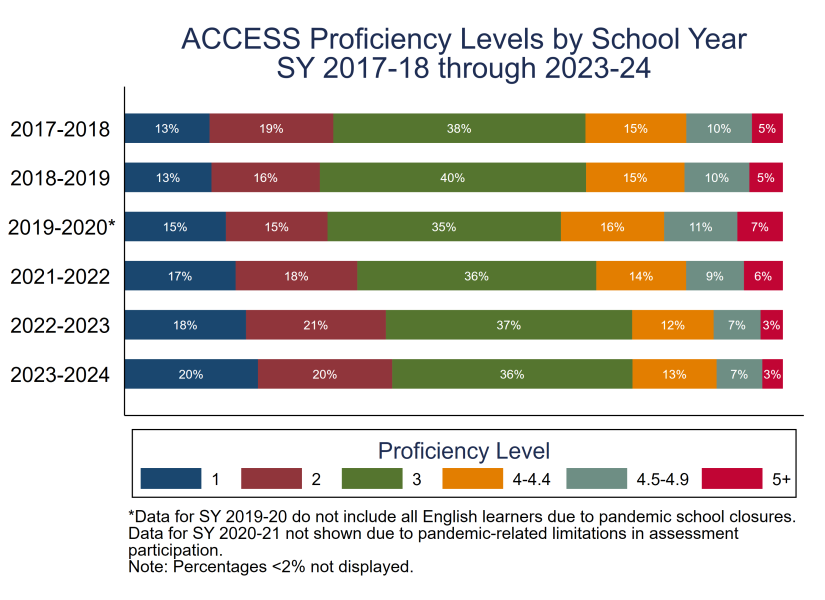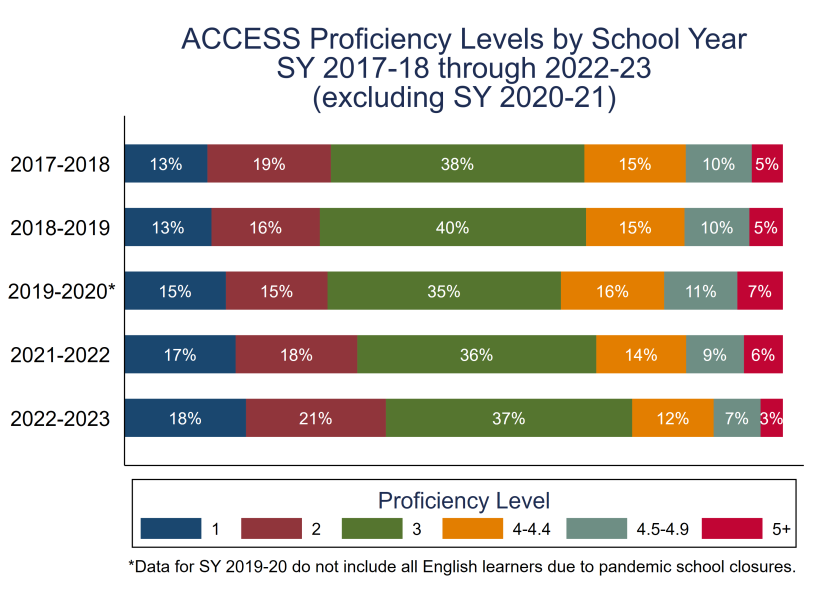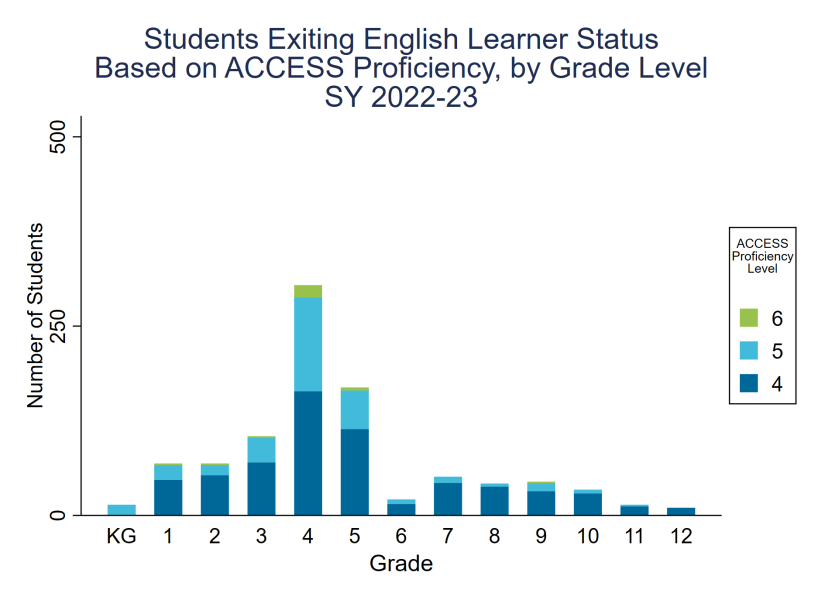About ACCESS for ELLs
ACCESS for ELLs is a suite of secure, large-scale English language proficiency assessments for kindergarten through grade 12 students who have been identified as English learners (ELs). The assessments are grounded in the WIDA English Language Development (ELD) Standards and given annually in WIDA Consortium member states to monitor EL students’ progress in acquiring academic English.
English language proficiency is a measure of the language students use in their interactions with peers and teachers in both instructional and social settings. Language and cognition develop over multiple years, and the path of each individual varies depending on many factors, including age, educational experiences, and personality. Students use listening, speaking, reading, and writing skills to learn academic content, share information, and discuss ideas. These are skills that all students work on throughout their education. ACCESS for ELLs measures an EL student’s skills in all four of these language domains. When students reach the statewide exit criteria, representing a high level of proficiency in English in all four domains, they no longer need language support services.
2024-25 School Year Results
- ACCESS for ELLs Participation 2024-25
- ACCESS for ELLs 2024-25 State Reporting
- ACCESS for ELLs 2024-25 Sector LEA School Reporting

2023-24 School Year Results
- ACCESS for ELLs Participation 2023-24
- ACCESS for ELLs 2023-24 State Reporting
- ACCESS for ELLs 2023-24 Sector, LEA and School Reporting

2022-23 School Year Results
- ACCESS for ELLs Participation 2022-23
- ACCESS for ELLs 2022-23 State Reporting
- ACCESS for ELLs 2022-23 Sector, LEA and School Reporting


2021-22 School Year Results
- ACCESS for ELLs Participation 2021-22
- ACCESS for ELLs 2021-22 State Reporting
- ACCESS for ELLs 2021-22 Sector, LEA and School Reporting
2019-20 School Year Results
Due to coronavirus (COVID-19) school closures on March 16, 2020, and the subsequent cancellation of statewide testing on March 23, not all students who were registered to take ACCESS were able to complete testing. Since many tests were not able to be completed, some students did not receive overall composite scores for the 2019-20 school year. In order to receive a final composite score (which is used to determine if a student can exit from English learner services), students must complete all four domains of the assessment. Students that completed some domains received domain scores based on what they completed, though they did not receive a composite score. The 2019-20 ACCESS for ELLs 2.0 and Alternate ACCESS for ELs results only include students that were able to complete all four domains. These data should not be considered representative of all students’ or schools’ results, and are provided for the purpose of transparency. Schools are encouraged to use individual students’ most recent composite and domain scores to develop annual language goals.
- ACCESS for ELLs Participation 2019-20
- ACCESS for ELLs 2019-20 State Reporting
- ACCESS for ELLs 2019-20 Sector, LEA, and School Reporting
2018-19 School Year Results
- ACCESS for ELLs Participation 2018-19
- ACCESS for ELLs 2018-19 State Reporting
- ACCESS for ELLs 2018-19 Sector, LEA, and School Reporting
- English Learners in DC (2018-19 School Year)

Resources for Local Education Agencies and Educators
WIDA English Language Development (ELD) Standards: The WIDA Standards are DC’s state ELD standards and are a resource for planning and implementing language instruction and assessment for multilingual learners as they learn academic content.
ACCESS for ELLs Interpretive Guide for Score Reports Grades K–12 Spring 2020: This guide helps educators understand what students’ ACCESS for ELLs scores mean and what to do with that information.
Can Do Descriptors: Similar to the WIDA ELD Standards, the Can Do Descriptors represent what learners can do with language across different content areas and can be used to understand ACCESS for ELLs test scores, differentiate instruction and classroom assessment, and advocate for language learners to have equitable access to grade-level academic content.
The ACCESS Growth Target and How to Use It: This OSSE training webinar provides information on the ACCESS growth target: what is it, how is it calculated and how to use it to develop English language development goals for your EL students.
Technical Assistance Opportunity: Deep Dive on LEA English Learner Data: OSSE will provide visualizations of state and local education agency-level EL data and tools to identify trends in data related to EL achievement. The session will benefit LEAs that want to conduct a deeper dive into their key EL data in order to develop action plans and refine their EL programs. For more details and to schedule a session, click here.
Resources for Parents
What is ACCESS for ELLs? (in 13 languages): This flyer explains what ACCESS is and why students take this kind of assessment. It can help parents understand annual language proficiency testing.
ACCESS for ELLs: Understanding Your Child's Scores (guide in 13 languages): This flyer explains each piece of score information included in the report. It can help parents understand what scores mean and how they are used.
Note: [XLS] This document is presented as a Microsoft Excel. | [PDF] This document is presented in Portable Document Format (PDF). A PDF reader is required for viewing.


